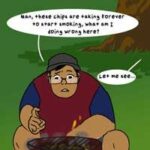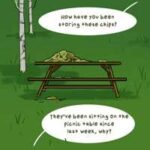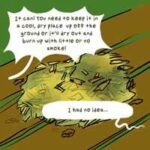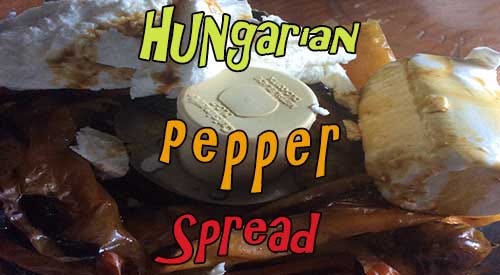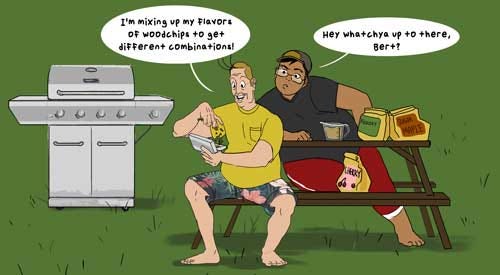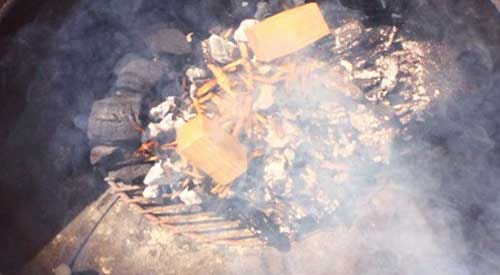 |
How to turn your charcoal grill into a smoker
|
Let’s
be honest. When you bought that charcoal
grill you were likely thinking that you could both grill and smoke without
needing to add anything. Soon, you
realized, that just wasn’t the case. Now,
you’re contemplating whether you need to purchase a smoker. Well, hold on the shopping trip until you
read this.
You can turn your charcoal
grill into a smoker with these simple steps!
Any Charcoal Unit Will Smoke
Obviously,
if you own a little tailgate model of a charcoal grill, you won’t be doing
multiple slabs of ribs or a full packer cut brisket on that unit. But you can smoke on any charcoal grill if
you follow some simple steps and afford yourself enough time to do it right.
How To Add Smoking Woods to the Charcoal Grill
Essentially,
when you smoke on a charcoal grill you are roasting outdoors like you do in
your conventional oven. If you use a
good quality hardwood charcoal, you will get some flavor from that product but
not like true smoked foods you may have experienced in your favorite barbecue
restaurant. That bolder flavor only
comes from unprocessed hardwoods.
Picking Your Fuel and Smoke Flavor
There
are three primary fuel types you can use in your charcoal grill: briquettes
with instant lite, briquettes, and lump hardwood charcoal. Right off the bat, I’m going to tell you to
eliminate the briquettes with instant lite.
That is a product that contains an accelerant or petroleum product to
make it quick lighting. Unfortunately,
it adds a very distinct, unpleasant component to the cooking process that can
transfer off-flavors to your foods.
Stick with plain briquettes or lump hardwood charcoal. Just note, that you likely will find a bit
more ash developing faster with lump hardwood charcoals than you would with
briquettes.
Picking
the wood for smoke flavor has a few rules you should adhere to: only use
hardwoods, try to limit the bark on the wood or go bark-free for the best
temperature control, find woods that have some measurable moisture level so
they smolder – around the 20% level is ideal, and use chunks of wood versus
chips.
Indirect Cooking Method
What
truly makes for barbecue and not just grilling is using the indirect method of
cooking. There are many ways to set up a
two-zone cooking method which is also referred to as indirect cooking. Often, what you are cooking and the quantity
will determine the setup of the fuel.
There
are two popular methods that work the best: banking the charcoal to one side of
the unit with the food going on the unlit side and putting the charcoal on each
side of the unit with the food going in the middle where no charcoal is
present.
For
those that need a bit more help keeping everything where it’s supposed to go,
there is an accessory called the Slow “N
Sear that works well with kettle grills and includes a trough that holds
water. This allows you to place foods on
the upper grates as well as below on the opposite side of the charcoal. It certainly will give you ample room to cook
many pounds of meat.
Water Keeps Everything Moist
To
ensure that any protein cooked on the grill remains moist and tender, include a
water pan in your set up. This is easily
done by purchasing readily available disposable foil pans from the discount
store. The shape and size will be
dependent on your actual grill. I like
to add warm water to the water pan so the grill does not have to exert energy
to heat up the water, which takes heat away from the unit. Remember, the water will be evaporating
during the cooking process so have additional water available if it depletes
before the cooking is complete. Water
pans are set in the base of the unit on the charcoal free side, directly under
the food. This will also act as a drip
pan, catching all those juices as well.
Chimney Starter for Easy Lighting
Once
you have your charcoal set up, the water pan laying in the charcoal free
section, it’s time to light the charcoal.
The easiest way to do this and ensure that the grill gets hot pretty
fast is to light a chimney starter.
These are portable containers made of metal that allow you to pour a
couple of pounds of charcoal into and light from vent openings at the
base. Usually these devices require you
to place newspaper at the base which is then lit with a lighter to ignite the
cold charcoal. I skip the newspaper step
and simply use a MAP gas canister with easy operating torch head to lite the
charcoal. The best part is I can leave
the torch under the chimney starter on a safe surface such as concrete, while I
finish the grill set up. Once the
charcoal at the bottom of the chimney starter is lit, I remove the torch and
allow it to burn up through the rest of the charcoal. Once the pieces are grayed over and showing
hot embers, it’s ready to pour into the grill’s charcoal area. I carefully pour the hot coals on top of the
unlit coals. This will ensure plenty of
fuel during the cooking process. Next,
3-4 wood chunks are placed on the hot coal area. I usually disperse these with a couple of
inches between pieces.
Moist Cold Surfaces Attract Smoke Vapor
With
the grill set up complete, the hot coals going and the wood chunks beginning to
smolder, it’s time for the meat. Always
take the prepared meat directly from the refrigerator to the grill COLD! Cold foods will attract smoke vapor faster,
allowing the vapor to condense on the food’s surface. The water pan will ensure that moisture
remains within the grill which also will ensure attraction of the smoke vapor.
Vent Settings Guarantee Temperature Control!
Although
charcoal as a fuel also aides in temperature control, I’m going to speak about
air control. To sustain fire or combustion,
you need oxygen flowing into the grill, stimulating the hot coals. This is the intake damper. Close it completely, and you’ll put the fire
out and lose all temperature. Open it
wide and you’ll increase the temperature as the coals get stimulated for more
heat.
On
the opposing end is the exhaust damper also called a vent or flue/chimney. This vent is what pulls in the oxygen through
the lower intake damper. Yes, smoke is
expelled through the exhaust vent but heat as well as the gases that are derived
from the combustion of the fuel material including the hardwood chunks are also
vented. The exhaust vent needs to be
partially open all the time. If the
temperature starts to fall, open the intake damper wider. If the temperature is too high, reduce the
oxygen to the fire by closing the intake damper.
Now,
make your shopping list for your favorite foods to smoke and set up that
charcoal grill for a fabulous flavorful day.
It’s really that simple!
Did
we get you motivated with this article?
If so, leave a comment as we’d love to hear from you. Don’t forget to let us know what other
questions you have, as we always design our postings after the needs of our
followers. As always, subscribe and
follow us, so you don’t miss a thing!

